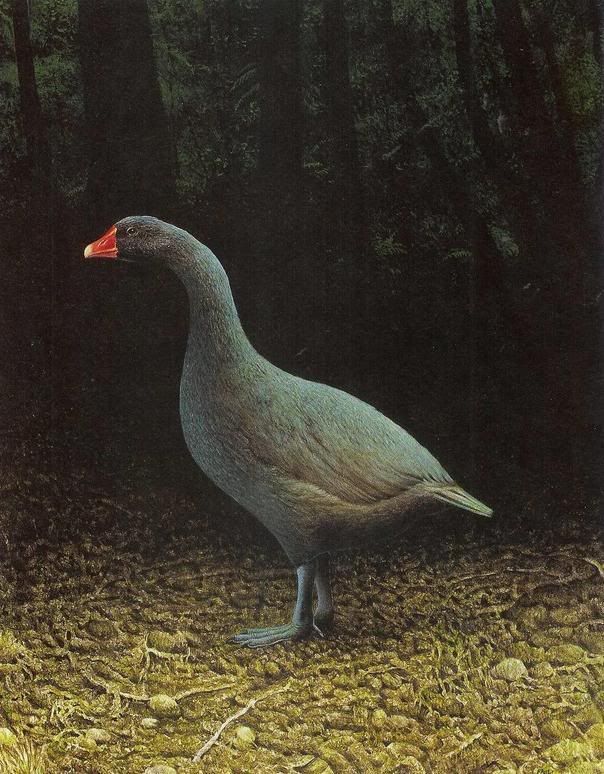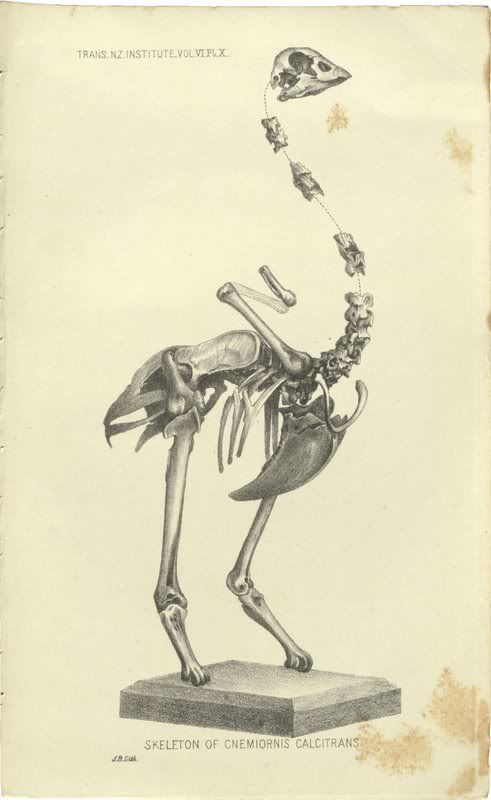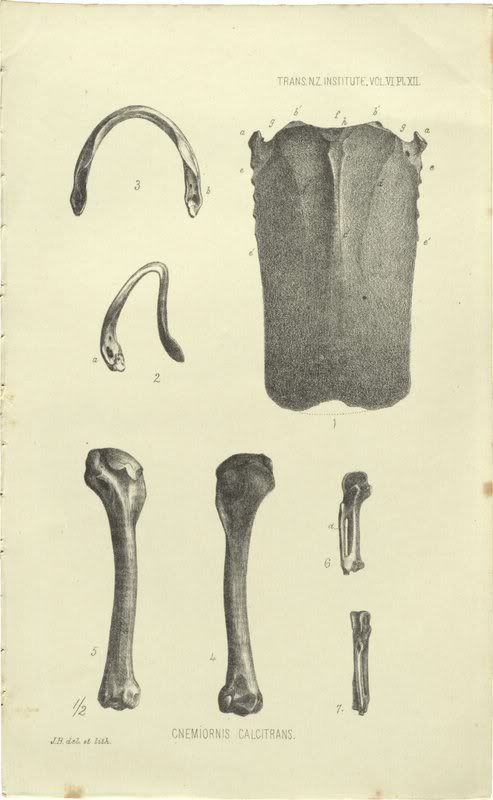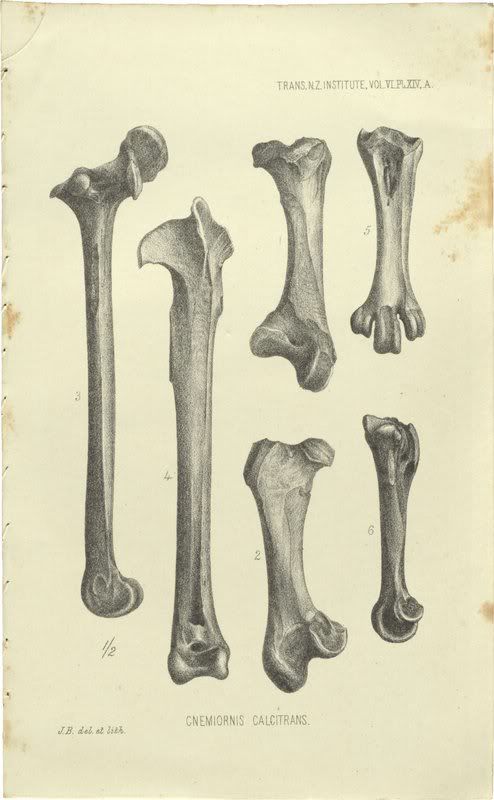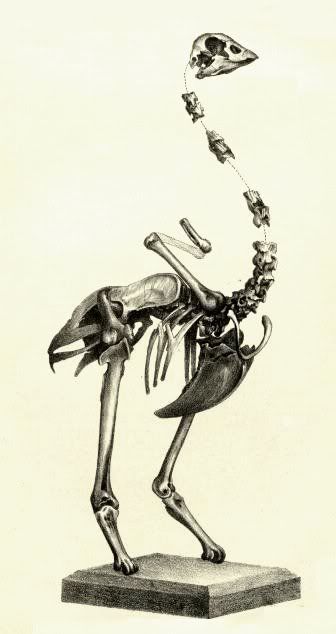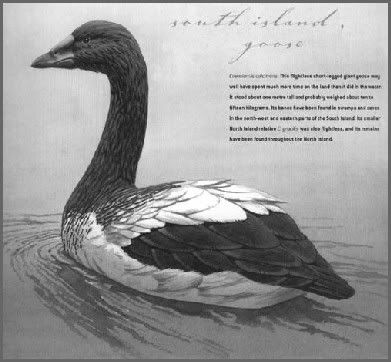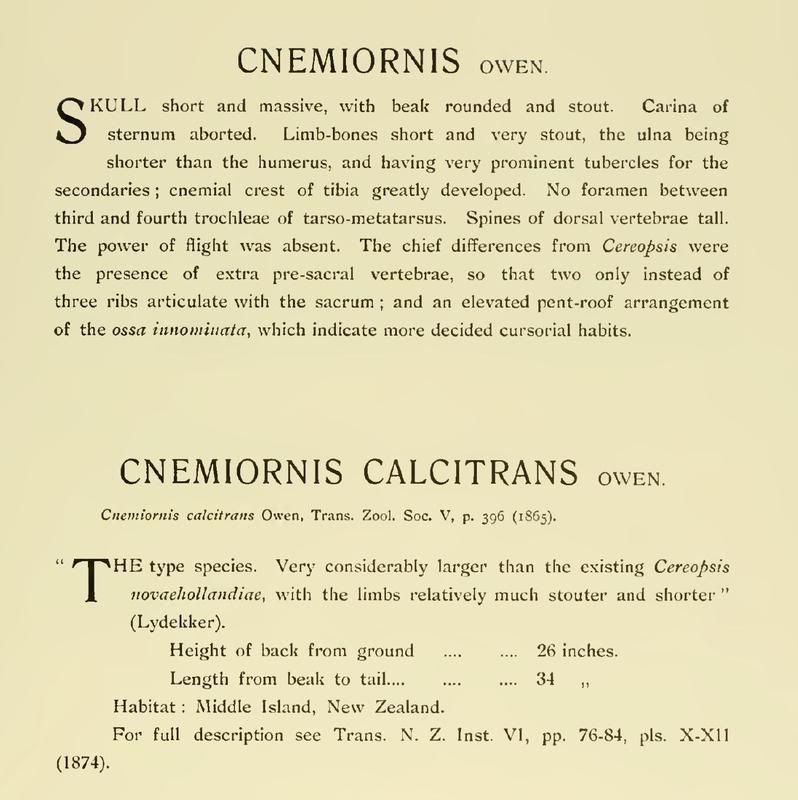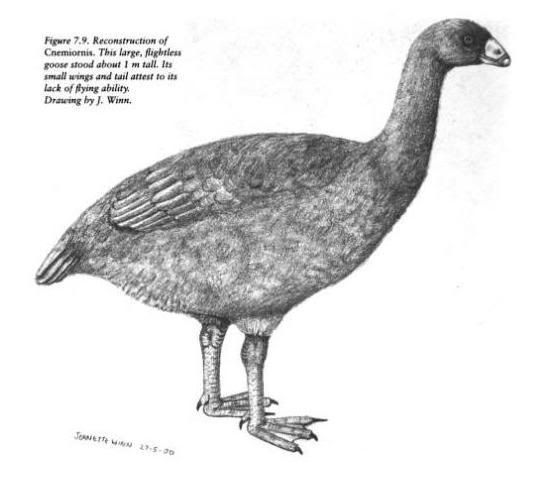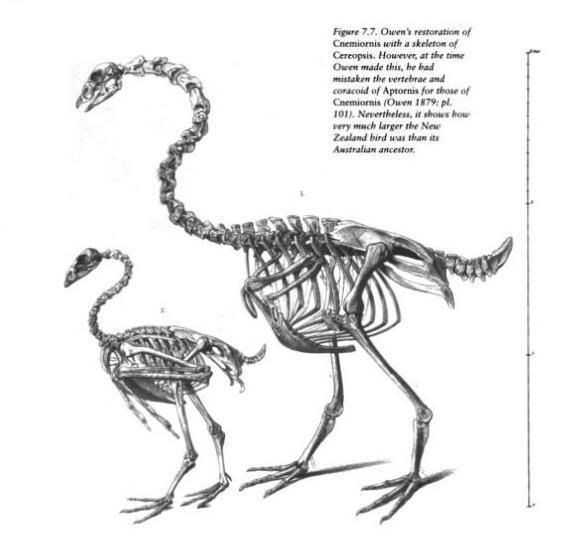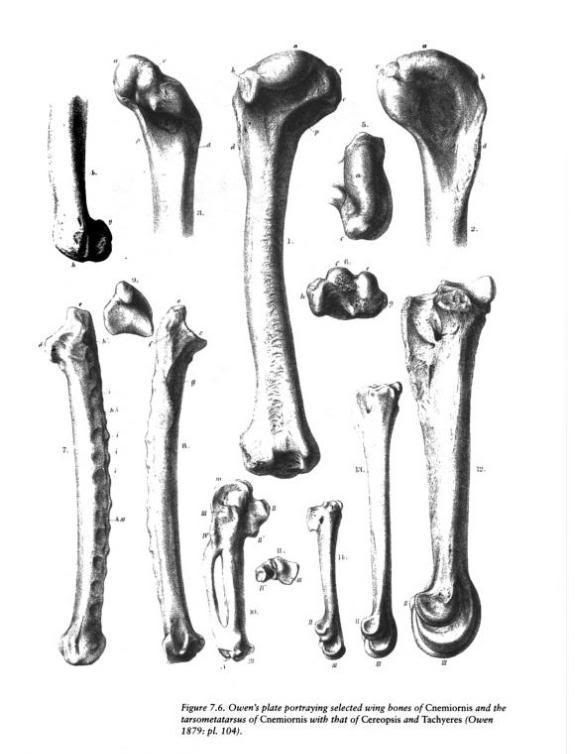Post by another specialist on Jun 4, 2005 16:12:44 GMT
cnemiornis calcitrans

Cnemiornis is an extinct flightless "goose" from New Zealand. Two species are known, each of which was endemic to one of the two main islands of New Zealand. The bird was never particularly common. It seems to have done best in Late Pleistocene times, as the glaciers of the last ice age were retreating. It became extinct shortly after the arrival of the Polynesians in New Zealand, presumably as a result of human predation.
There's considerable doubt about the proper place of Cnemiornis in the order of things. Livezey [L96] (whom we follow), places it just North of the Anatidae (Anas + Anser?). However, Worthy et al. [W+97] had the advantage of a new specimen, by far the most complete ever found; and they conclude that Cnemiornis falls within the modern geese, as the sister of the living, but comparatively primitive, Cape Barren goose, Cereopsis. There argument is sound, but we prefer Livezey's study for three reasons.
First, most of the characters use to show similarity between Cereopsis and Cnemiornis were known before the new specimen. If the characters were phylogenetically informative over a reasonable range, this similarity ought to have shown up in the previous study. Second, most of the points scored against Livezey's use of character data could equally well be taken to place Cereopsis outside Anatidae, rather than placing Cnemiornis within it. Finally, consistent with this last point, [W+97] do not actually find that Cnemiornis is an anatid. Rather they find a trichotomy of ducks, geese, and a Cereopsis-Cnemiornis clade. Thus, Worthy's data is also consistent with Cnemiornis being basal to the Anatidae, although it does not require this result.
more info here
www.palaeos.com/Vertebrates/Units/360Galloanserae/360.670.html

Cnemiornis is an extinct flightless "goose" from New Zealand. Two species are known, each of which was endemic to one of the two main islands of New Zealand. The bird was never particularly common. It seems to have done best in Late Pleistocene times, as the glaciers of the last ice age were retreating. It became extinct shortly after the arrival of the Polynesians in New Zealand, presumably as a result of human predation.
There's considerable doubt about the proper place of Cnemiornis in the order of things. Livezey [L96] (whom we follow), places it just North of the Anatidae (Anas + Anser?). However, Worthy et al. [W+97] had the advantage of a new specimen, by far the most complete ever found; and they conclude that Cnemiornis falls within the modern geese, as the sister of the living, but comparatively primitive, Cape Barren goose, Cereopsis. There argument is sound, but we prefer Livezey's study for three reasons.
First, most of the characters use to show similarity between Cereopsis and Cnemiornis were known before the new specimen. If the characters were phylogenetically informative over a reasonable range, this similarity ought to have shown up in the previous study. Second, most of the points scored against Livezey's use of character data could equally well be taken to place Cereopsis outside Anatidae, rather than placing Cnemiornis within it. Finally, consistent with this last point, [W+97] do not actually find that Cnemiornis is an anatid. Rather they find a trichotomy of ducks, geese, and a Cereopsis-Cnemiornis clade. Thus, Worthy's data is also consistent with Cnemiornis being basal to the Anatidae, although it does not require this result.
more info here
www.palaeos.com/Vertebrates/Units/360Galloanserae/360.670.html




